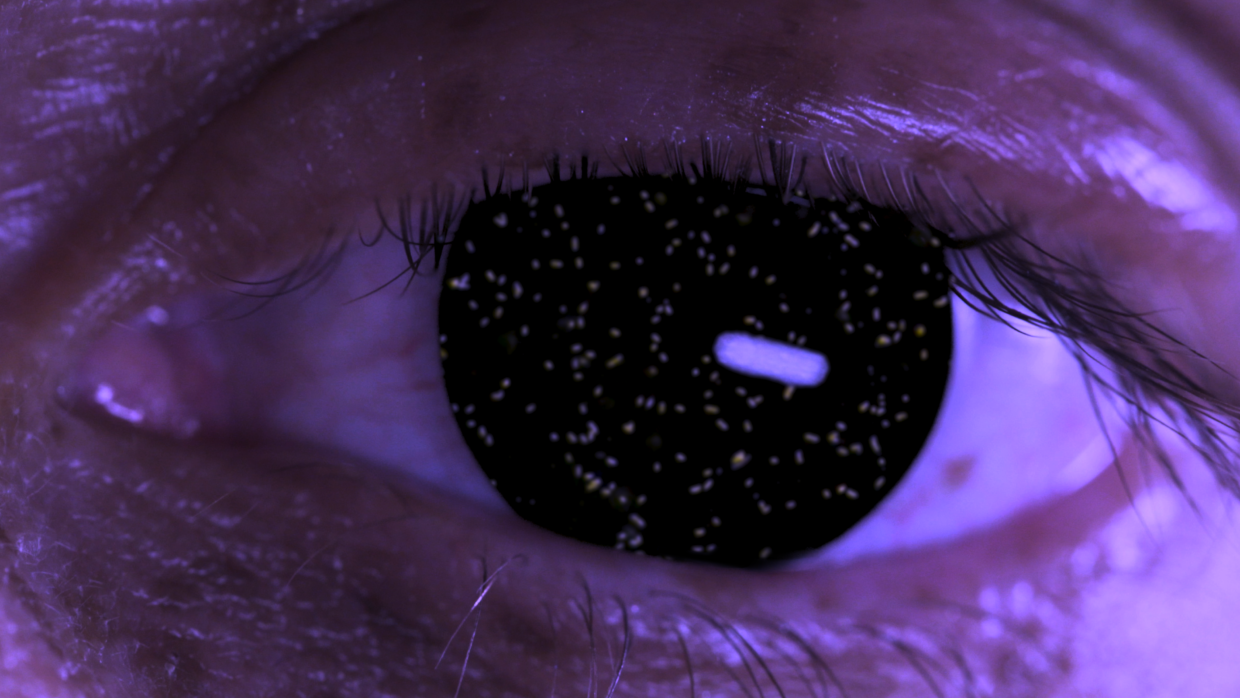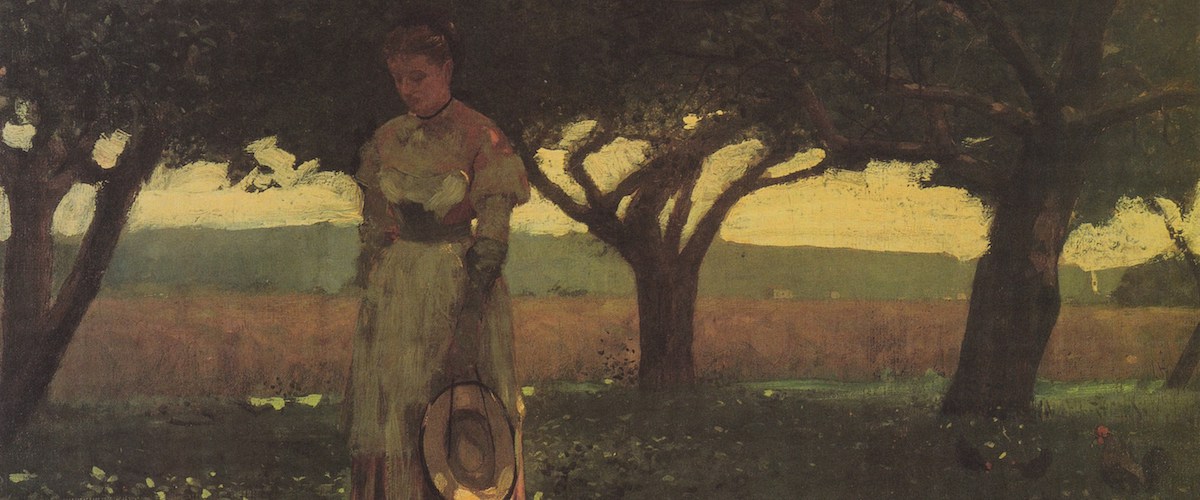Two adolescent girls go for a hike. They are away from home, at summer camp together, and they have left the main group of campers to walk up a rocky hillside thick with trees. The girls are extremely close friends, as young girls often are; the boundaries between each others’ thoughts and feelings and bodies are sometimes hard to define. As they’re walking, one of the girls leaves the main path for a moment to pee behind a tree. A minute later, her friend hears a strange shout. She runs into the brush, but no one is there. Her friend is gone. She’s just disappeared.
This is the premise of a short story Margaret Atwood wrote in 1990 called “Death by Landscape”. Atwood’s story is told from the perspective of the surviving woman, decades later. Her friend’s disappearance has haunted her for her whole life, and she’s developed an obsession with landscape paintings. She collects them and covers the walls of her home with them.
Staring at the paintings in her room one evening, she says they seem to open “inward” onto the wall, “not like windows, but like doors.” And sometimes, after looking at a painting for several hours, she thinks she can see her lost friend in the image—not as she was, in human form, among the trees, but constituted by them. She admits she believes that the hillside gained a new tree the day of the disappearance. She says: “There are no backgrounds in any of these paintings, no vistas; only a great deal of foreground that goes back and back, endlessly, involving you in its twists and turns of tree and branch and rock.”
By the end it’s clear that the death at the center of “Death by Landscape” is not a death at all. It’s a mutual transition, a twin becoming of girl and tree. The figure has become the ground, and so the ground becomes a kind of figure. Situating her aging narrator in a room full of landscape paintings that open “like doors,” Atwood represents the girl’s disappearance as both a temporal lapse and an optical trick. In that gap of perception, figure and landscape merge and flip.
 Jenna Sutela, Holobiont (2018)
Jenna Sutela, Holobiont (2018)
The word “landscape” usually suggests the passive, the inert, the natural, the nonhuman—as in the plant, animal, and mineral world that constitutes a backdrop for a human actor. But here, the sudden absence of a human actor occasions a sudden presence: the presence of landscape, the presence of the plants. It’s no accident that the figure who becomes absent in this story is a girl. In fact, girls and women (or just not-men) might be particularly prone to “death” by landscape. What forms of knowledge might be required to die a death which is not a death at all? Are certain kinds of bodies really more ripe for transformation—implantation?
I start with Atwood’s story because I think fiction offers a particular way of asking, if not exactly answering, these questions. This has to do with how fictions offer themselves for literal interpretation. Sure, the idea of woman-becoming-vegetation operates on a metaphorical register, and it’s possible to read a story like Atwood’s as a metaphor for female adolescence; for the naturalization of women’s social positions; for environmental awareness; for friendship; or even just for death.
But the story also operates on a very concrete level. We don’t see it happening, but the straightforward implication of the plot is that a person becomes a tree. The fact that we don’t quite see it happen in the story is partly why it’s so literal: the how isn’t important, it’s the event itself that matters. Whether or not the story is about the idea of becoming tree, it’s also about the fact of becoming tree. Fiction like Atwood’s often seems to work on both levels of aboutness: it’s about and it also is. By learning to read weird fictions on a literal level it may be possible to see how weird (the fiction of) reality already is.
 Rachel Rose, Enclosure (2019)
Rachel Rose, Enclosure (2019)
The Atwood story is a perfect example of The Weird, according to the definition of weirdness provided by the late Mark Fisher in his 2016 book, The Weird and the Eerie. Fisher, who admired and wrote about Atwood, defines the “weird” as an “outside space,” that “lies beyond standard perception, cognition, and experience.” He explains that this “outside is not ‘empirically’ exterior; it is transcendentally exterior, i.e. it is not just a matter of something being distant in space and time, but of something which is beyond our ordinary experience and conception of space and time itself.” The weird, in other words, is an element or zone or experience that is not completely explainable according to our current structures for categorizing the world. And yet it exists: we can come in contact with it, experience it, and try to describe it, knowing description will fall short.
By learning to read weird fictions on a literal level it may be possible to see how weird (the fiction of) reality already is.Importantly, Fisher says the weird is not simply the awareness of this outside, but the perceptual flip that happens upon awareness, when you see back at the inside from the outside position. It’s only when you get a glimpse back at “normal” space from the outside that you realize you’ve been living in an inside at all. Or maybe, only when you become background that you can see the confines of the figure.
 Rachel Rose, Enclosure (2019)
Rachel Rose, Enclosure (2019)
The other term Fisher uses to augment and distinguish the weird is the eerie. The eerie is particularly “tied up in questions of agency.” An eerie event, like the classic eerie cry from the forest (as in Atwood’s story) scrambles straightforward cause-and-effect, and undermines certainty about who is causing what. Something formerly thought of as passive, like a tree branch, suddenly appears to have active powers. And the thing formerly thought of as presiding over the landscape, namely the human, suddenly seems to have fewer powers. Maybe the eerie can be explained, but there’s something extra leftover from the explanation. A disconcerting excess.
Taken together, Fisher’s notions of the weird and the eerie are ways of describing what he calls “that which does not belong.” The reason it does not belong is not that it is artificial or supernatural as opposed to natural. “Natural” is exactly what is displaced, or made to not belong, in a weird story. For instance, a creature like a vampire might be supernatural—but it isn’t weird. It’s an entirely familiar figure based on a set of commonly understood fictions. On the other hand, a black hole is very weird, because it actually exists, even though we still don’t understand how. In Fisher’s words: “If the entity or object is here, then the categories which we have up until now used to make sense of the world cannot be valid. The weird thing is not wrong, after all: it is our conceptions that must be inadequate.”
 Rachel Rose, Enclosure (2019)
Rachel Rose, Enclosure (2019)
I’m not invested in defining a genre of fiction any more than Fisher was, but these terms provide a roadmap for thinking through the kinds of stories that take us toward the black hole. That is: the thing that literally exists but nonetheless resists linguistic description or cognitive explanation, the thing that dismantles the very tools of signification and representation that fiction depends on. There’s a potential name for this kind of fiction: the New Weird. The term itself isn’t new at all by now; it’s been floating around since the early 2000s, and even then, the type of writing it described was not necessarily a novel departure from types of writing that came before, such as the New Wave of the 1960s or the horror fiction of the 80s. (One one level, the term is simply useful insofar as it delineates a market category in order to sell books; increasingly you’ll find it as a bookstore label or an Amazon keyword.)
Like all “new” and “post-” terminology, the New is an adjective used to distinguish from and connect to a past genre—in this case what might be called the “Old Weird.” Old Weird is a name retroactively given to certain writing from the late 19th and early 20th century. The quintessential “Old Weird” author is H.P. Lovecraft—best known for his now-famous 1926 story “The Call of Cthulu” about a horrific, compelling, tentacled, ancient creature who rises from the depths of time and overwhelms the main character’s sense of empirical reason and human agency. The story is emblematic of the Weird, because it deals with the wonder and horror at the fringes of human consciousness—and in this way suggests “the relative inconsequence of the human species in relation to the deep time of the universe,” in the words of writer Alison Sperling.
That discomforting implication of the limits of the human mind and the potential dissolution of the category Humanity makes Lovecraft’s fiction seem like a precursor to the contemporary awareness of the Anthropocene age. In an era defined by the planetary catastrophe of anthropogenic climate change, discussions of Lovecraft have come into prominence in philosophy, literature, and the arts. The horror of the archaic sea creature coming back to claim its due is a narrative (too) easy to map onto our current moment.
 Caspar David Friedrich, The Watzmann (1824-25)
Caspar David Friedrich, The Watzmann (1824-25)
The narrative is too easy partly because the main character of Lovecraft’s weird world was usually a white guy. Lovecraft’s preoccupation was with the threat to this figure’s supremacy from the weird outside. A lot of Lovecraft’s ideas, expressed in and out of his fiction, are clearly racist, sexist, and xenophobic. As the author Marlon James recently put it in an interview, in Lovecraftian tales “the other always comes from the South. The other always comes from darkness . . . it’s always coming from the outside . . . the dark continent.”
While some attempt to try to ignore these aspects of Lovecraft’s writing or even erase him from the literary legacy of the weird, his position as a point of origin is central to understanding the pitfalls, and potentials, of weirdness. For instance, as James suggests, certain marginalized bodies have always been designated weird: historically aligned with the “outside,” the freaky, the abnormal, the exotic. Fascination with and fear of the Other are embedded in classic weird tales—in which the white guy is the figure and everyone/everything else is landscape.
New Weird has potential to do something different. Rather than simply re-drawing boundaries of normality to be more inclusive, “to weird” today could be to map on the same strangeness certain subjects have historically been afforded onto other subjects in order to reveal the inherent strangeness of all such constructs. What feels weird or eerie depends on who you are, and is therefore a political question. Through perceptual flips, New Weird could relocate the weird other from the outside to within. Within the default main character of a story, but perhaps also within the category humanity itself.
Knowing how to dissolve and become other is a non-codified and embodied kind of knowledge that women, and other supposedly unstable bodies, have been cultivating for centuries.In the Belgian writer Anne Richter’s very short story from 1967 called “The Sleep of Plants”, a young woman finds herself increasingly estranged from her family and her fiancé. She feels adrift, physically ill, exhausted, unmoored. Following her urge toward stillness and silence, she decides to plant herself in a large pot with soil up to her hips. “How good it felt! Never had she known such ecstasy. She was back in her element.” From then on, she simply refuses to move. Her fiancé accuses her of “deliberately destroying” herself and her mother refuses to water her. Eventually, and it’s not exactly clear when or how, the woman becomes indistinguishable from a tree. Her fiancé gives up and marries someone else, but he agrees to move her outside to the yard, where she ends up living for long after he eventually dies. “She saw that, by dint of stillness and withdrawal, you felt yourself become the center of the world, the source of its movement. . . . She decided to fall silent, and in silence, to animate the world.”
 Giuseppe Arcimboldo, Vertumnus (1590-91)
Giuseppe Arcimboldo, Vertumnus (1590-91)
The American writer Kathe Koja tells a more disturbing story in “The Neglected Garden” from 1991. A couple living in a country house have a fight, and the man tells the woman to get out, threatening violence. But she can’t bring herself to leave. Instead she impales herself on the fence in their backyard. As the hours and days pass, she becomes host to plantlife, her body at first festering and withering and becoming horribly infected, but then resurrected in full bloom, a melded conglomeration of human self and vegetal splendor. Her husband, enraged by her refusal to leave, douses the organism that used to be his wife with herbicide in an attempt to murder her—but she seems to absorb the chemical compound and incorporate it into herself, activating her new body and coming after him.
In both Richter and Koja’s stories, a woman implants herself in despair, but also in protest. To plant: to stake firmly, to fix in place. She’s tired of being told where to go, so she decides to stop going anywhere. In what may look like a gesture of passivity, even self-destruction—imprisoning herself in a pot, crucifying herself on a fencepost—she stops, she refuses, she becomes silent, she grows, she becomes. Here, there is no ancient Cthulu creature, no threatening outside, but a generative inside within the body of the woman planted in the earth.
These stories offer a curious inversion of the classic female imperative to “put down roots and start a family.” After all, women are supposed to be good at this sort of thing. Communing with nature, nurturing, caring. Like the family garden, like the landscape, she is supposed to be a passive, fertile resource to be exploited. Like the earth, she is supposed to be penetrable, boundariless, ready for implantation and extraction. Those are profoundly non-weird ideas about there being a biological basis for women’s ability to empathize, self-sacrifice, and reproduce.


